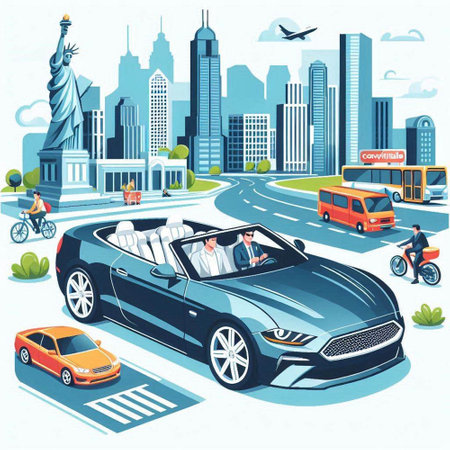Introduction: Electric Cars on British Roads
The United Kingdom is experiencing a remarkable shift in motoring habits as electric vehicles (EVs) become an increasingly common sight from the bustling streets of London to the scenic byways of the Lake District. With government incentives, expanding charging infrastructure, and growing environmental awareness, more Brits are choosing to make the switch from traditional petrol or diesel motors to greener alternatives. Among the most talked-about models are the Tesla Model 3 and the Polestar 2—both of which have captured the imagination of UK drivers seeking a blend of performance, practicality, and style suitable for everything from city commutes to adventurous road trips and even wild camping escapes. These two EVs represent not just cutting-edge technology but also a lifestyle change, as British motorists embrace a culture where sustainability meets convenience and modernity. As public charging points multiply along motorways and at countryside campsites alike, owning an EV is becoming easier than ever. This comparison aims to explore why the Tesla Model 3 and Polestar 2 stand out in the UK market and how they fit into the evolving tapestry of British automotive culture.
2. Design and Comfort: Tailored for British Lifestyles
When it comes to electric vehicles suited to British roads, both the Tesla Model 3 and Polestar 2 offer unique design philosophies and practical touches, but how do they measure up for UK drivers who juggle winding country lanes, unpredictable weather, and family getaways?
Exterior Styling: Modern Minimalism vs. Scandinavian Chic
The Tesla Model 3 sports a clean, aerodynamic silhouette with subtle curves—an approach that appeals to those who prefer understated elegance. Its low bonnet and slim LED headlights make it stand out on city streets as well as in rural villages. The Polestar 2, meanwhile, brings a bolder Scandinavian aesthetic with a more upright stance and distinctive Thor’s Hammer headlights, giving it a crossover-like presence that feels at home both in urban environments and parked outside a countryside pub.
At-a-Glance: Exterior Dimensions
| Model | Length (mm) | Width (mm) | Height (mm) | Turning Circle (m) |
|---|---|---|---|---|
| Tesla Model 3 | 4694 | 1849 | 1443 | 11.6 |
| Polestar 2 | 4606 | 1859 | 1479 | 11.5 |
Both cars are compact enough for tight UK parking spaces and narrow lanes, though the slightly higher ride height of the Polestar 2 may inspire more confidence when navigating uneven village roads or speed bumps.
Interior Quality: Comfort Meets Practicality
Tesla’s interior is famously minimalist, dominated by a large central touchscreen. While this creates an uncluttered feel, some British drivers may miss physical buttons during chilly mornings or rainy commutes. In contrast, the Polestar 2 combines vegan-friendly materials with tactile controls and an intuitive Google-based infotainment system—ideal for quick adjustments while on the move through winding B-roads.
Boot Space & Family Practicality
| Model | Boot Space (Rear Seats Up) | Boot Space (Rear Seats Down) | Front Boot (“Frunk”) | Split-Folding Rear Seats |
|---|---|---|---|---|
| Tesla Model 3 | 425 litres | ~649 litres* | 88 litres | Yes (60/40) |
| Polestar 2 | 405 litres | 1095 litres* | 35 litres | Yes (60/40) |
*Manufacturer estimates; actual usable space may vary.
The Polestar’s hatchback design gives it an edge for loading camping gear or bulky items—a real boon for families heading to the Lake District or Cornwall. Both models include split-folding rear seats, making them adaptable for prams, coolboxes, or even muddy wellies after a walk in the Peaks.
A Car for All Seasons?
Bespoke features like heated seats and steering wheels come standard on many trims of both cars—a must-have for frosty British mornings. The panoramic glass roof in each model brightens up grey days but is tinted to prevent overheating during those rare heatwaves. Thoughtful storage cubbies make daily life easier, whether you’re popping into Tesco or prepping for a weekend away at a campsite.
Ultimately, whether you lean towards Tesla’s tech-led minimalism or Polestar’s premium practicality, both EVs are thoughtfully designed with British drivers’ needs in mind—from school runs along hedge-lined backroads to scenic escapes across the UK’s diverse landscapes.

3. Range, Charging, and Everyday Usability
When it comes to electric vehicles in the UK, range and charging practicality are more than just numbers on paper – they’re crucial for daily commutes, weekend getaways into the countryside, and those inevitable motorway service station stops for a quick top-up. The UK’s often chilly, damp climate also plays a role, as real-world battery performance can differ from official WLTP figures. Here’s an in-depth look at how the Tesla Model 3 and Polestar 2 stack up in terms of range, charging convenience, and everyday usability for British drivers.
Real-World Battery Range in the UK Climate
| Model | Official WLTP Range (miles) | Estimated Real-World Range (Winter/Summer) |
|---|---|---|
| Tesla Model 3 Long Range AWD | 374 | 270–310 / 320–350 |
| Polestar 2 Long Range Dual Motor | 367 | 230–270 / 300–330 |
While both cars offer impressive official ranges, UK owners report that colder months can knock as much as 20% off advertised figures. The Model 3 tends to fare slightly better in winter thanks to Tesla’s efficient heat pump system and streamlined aerodynamics – a real boon when you’re driving through rain-soaked motorways or frosty village lanes.
Access to Public Charging Infrastructure
The UK’s public charging network has expanded rapidly, but ease of use varies. Tesla owners enjoy access to the proprietary Supercharger network, which is known for its reliability and speed – great if you’re planning longer trips up the M6 or across Scotland. Polestar drivers rely on third-party networks like Instavolt, Gridserve, or BP Pulse; these have improved but sometimes require multiple apps or RFID cards.
| Charging Network | Tesla Model 3 | Polestar 2 |
|---|---|---|
| Tesla Supercharger Access | Yes (seamless integration) | No (limited pilot access only) |
| Third-Party Rapid Chargers (CCS) | Yes (full compatibility) | Yes (full compatibility) |
| Total UK Rapid Chargers (April 2024) | Over 10,000 locations nationwide* | |
*Numbers constantly increasing; check Zap-Map for latest stats.
Home Charging Compatibility and Practicality
BOTH cars support Type 2 home charging. For most urban and suburban dwellers with off-street parking, installing a 7kW wallbox charger is straightforward. Tesla offers its own Wall Connector with smart scheduling via the app; Polestar recommends Pod Point or Ohme chargers. Average overnight charge from empty to full takes roughly 8–10 hours for either car at home – ideal for typical UK commuting patterns.
Typical Commuter Considerations in the UK Context
- Average Daily Commute: UK drivers travel about 23 miles per day; both vehicles easily cover this with ample margin for errands and spontaneous road trips.
- Countryside Getaways: Both models handle long drives to Wales or Cornwall with ease – though Tesla’s Supercharger advantage makes rapid recharging simpler during peak holiday periods.
- Urban Life: Both EVs thrive in London’s ULEZ zones and other low-emission cities, with regenerative braking reducing wear on city stop-start journeys.
4. Driving Experience: Handling the Best (and Worst) of UK Roads
If you’re eyeing up the Tesla Model 3 or Polestar 2 for your next adventure across the UK, the real test lies in how each contender tackles everything from winding B-roads to bustling city streets and unpredictable British weather. Here’s an in-depth look at ride comfort, handling, and overall experience as you navigate our unique driving conditions.
Ride Comfort: Long Journeys & Pothole Patrol
The UK’s roads are a mix of smooth tarmac and pothole-riddled lanes, so ride comfort is paramount—especially if you’re planning those epic Scottish Highlands road trips or weekend escapes to the Lakes District. The Tesla Model 3 offers a firmer ride with sportier suspension, which means it hugs corners tightly but can transmit bumps into the cabin on rougher surfaces. The Polestar 2, on the other hand, leans towards comfort; its suspension soaks up uneven surfaces better, making it less fatiguing over longer distances or poorly maintained rural routes.
Handling: Motorways vs. Twisty B-Roads
Both cars shine on the motorway, offering quiet cabins and stable cruising. The Model 3’s low centre of gravity (thanks to its battery pack) delivers agile handling on twisty B-roads—a boon for spirited drivers exploring Wales or the Peak District. The Polestar 2 is competent and confidence-inspiring but feels a touch heavier through tight bends. Here’s a quick comparison:
| Tesla Model 3 | Polestar 2 | |
|---|---|---|
| Motorway Stability | Excellent | Excellent |
| B-Road Handling | Sporty & agile | Stable & assured |
| Ride Comfort (Potholes) | Firm, sometimes jarring | Smoother, more forgiving |
City Driving: Manoeuvrability & Ease of Use
Navigating tight city streets in London or Manchester? Both models feature excellent visibility and responsive steering, but the Model 3’s slightly smaller footprint and nippy acceleration make parking and darting through urban traffic that bit easier. The Polestar 2’s higher seating position gives a commanding view—a plus for spotting cyclists and pedestrians—but its larger turning circle may require more shuffling into compact spaces.
Typical UK Weather: Rain, Fog & Everything In-Between
No review would be complete without mentioning Britain’s ever-changing weather. Both EVs offer heated seats and advanced climate control systems—essentials for chilly mornings in Yorkshire or wet Cornish afternoons. The Model 3’s Autopilot is handy for rainy motorway slogs, while the Polestar 2’s all-wheel-drive system provides extra reassurance when things get slippery.
Summary Table: Real-World Driving Experience in the UK
| Aspect | Tesla Model 3 | Polestar 2 |
|---|---|---|
| Ride Comfort (Long Distance) | Good, firm ride may tire some drivers | Softer ride ideal for long journeys |
| Maneuverability (City) | Easier to park & nimble in traffic | Slightly bulkier but excellent visibility |
| Wet Weather Confidence | Very good with Autopilot assists | Excellent with AWD grip & stability features |
| B-Road Enjoyment Factor | High – fun and engaging drive | Smooth, composed but less playful |
The Verdict:
If your journeys lean towards spirited drives on country roads or frequent city hops, the Model 3’s agility stands out. For those prioritising comfort on long hauls or seeking peace of mind during wintery weather, the Polestar 2 might edge ahead. Ultimately, both EVs deliver a distinctly modern take on traversing Britain—rain or shine.
5. Technology, Connectivity, and Infotainment for British Users
When it comes to in-car technology and infotainment, both the Tesla Model 3 and Polestar 2 are at the forefront of innovation. However, their approaches reflect different philosophies—something British drivers will want to consider for daily life on UK roads, from the M25 to remote stretches in the Highlands.
Infotainment Systems: Touchscreen vs. Traditional Controls
| Feature | Tesla Model 3 | Polestar 2 |
|---|---|---|
| Main Interface | 15-inch central touchscreen; minimalist design; almost all functions via screen | 11.15-inch portrait-oriented touchscreen; physical buttons for key functions (volume, play/pause) |
| User Experience | Highly responsive, but some find lack of physical controls distracting while driving on winding UK B-roads | Balanced mix of digital and tactile controls—ideal for quick adjustments on uneven country lanes |
Native Navigation & Mapping: Suited for the UK?
| Tesla Model 3 | Polestar 2 | |
|---|---|---|
| Navigation Source | Built-in Google-based maps with live traffic updates and Supercharger route planning across the UK network | Native Google Maps (Android Automotive OS) with regular updates, live traffic, and charge point integration (inc. Zap-Map compatibility) |
| UK-Specific Features | Covers most British charging points but focused on Tesla Superchargers; some rural mapping gaps reported by owners in Scotland and Wales | Seamless integration with third-party UK charging networks; strong address search and postcode accuracy for British destinations |
Smartphone Integration: Apple CarPlay & Android Auto Support?
The Polestar 2 leads here for many UK drivers. It offers both wired and wireless Apple CarPlay as well as Android Auto—making it easy to use your mobile’s apps, music, and navigation without fuss. The Tesla Model 3, by contrast, does not support CarPlay or Android Auto natively; instead, you rely on Tesla’s own ecosystem or workarounds. For those who prefer familiar apps like BBC Sounds or WhatsApp in the car, this could be a deciding factor.
Software Updates & Connectivity: Keeping Up with British Tech Trends
Tesla is famous for its over-the-air software updates, frequently rolling out new features—from improved Autopilot functions to entertainment options like Netflix or iPlayer streaming (when parked). Polestar also provides OTA updates, but at a slower pace. Both vehicles offer built-in 4G connectivity (with free trials varying by market), useful for real-time traffic info whether you’re heading through London or exploring Cornwall.
Which suits the British driver best? If you value seamless integration with your smartphone and prefer a more traditional interface that’s easy to use when navigating tight city streets or rural backroads, the Polestar 2 stands out. For tech enthusiasts keen on frequent updates and a fully digital experience—and don’t mind adapting to a new system—the Tesla Model 3 remains an icon. Ultimately, your choice will depend on whether you want familiar British comfort or cutting-edge Silicon Valley style behind the wheel.
6. Running Costs and Owner Perks in the UK
When weighing up the Tesla Model 3 against the Polestar 2 for your next British road adventure, it’s essential to factor in the running costs and owner perks specific to the UK. Here’s a breakdown of what you can expect when it comes to purchase price, government incentives, charging, insurance, servicing, and potential savings for both models.
Purchase Price & Government Incentives
| Tesla Model 3 (RWD) | Polestar 2 (Standard Range Single Motor) | |
|---|---|---|
| Base Price (OTR)* | £39,990 | £44,950 |
| Plug-in Car Grant (if eligible) | N/A (grant discontinued for most EVs) | N/A (grant discontinued for most EVs) |
| Road Tax (VED)** | £0 (first year & ongoing) | £0 (first year & ongoing) |
*On The Road price as of June 2024; **Electric vehicles are currently exempt from VED until April 2025.
Charging Rates & Infrastructure
Tesla’s Supercharger network is a real game-changer for those who love impromptu weekend escapes. Owners enjoy exclusive access to one of the fastest and most widespread rapid charging networks in the UK. Polestar 2 drivers have access to an ever-growing range of public chargers, with support for fast charging via networks like Ionity and Gridserve.
| Tesla Model 3 | Polestar 2 | |
|---|---|---|
| Max Charging Rate (DC) | Up to 250 kW (Supercharger V3) | Up to 205 kW (CCS public network) |
| Home Charging Compatibility | Type 2 / Tesla Wall Connector | Type 2 / Polestar Charger / Any universal charger |
Insurance & Servicing Costs
The cost of insurance will depend on your location, driving history, and cover level. Generally, both cars fall between groups 30-40 on the UK insurance group scale. Servicing is less frequent compared to petrol or diesel cars; Tesla offers fixed-price servicing packages while Polestar uses Volvo’s UK dealer network.
| Tesla Model 3 | Polestar 2 | |
|---|---|---|
| Typical Insurance Group* | 34-40 | 32-38 |
| Annual Service Plan (approx.) | £300-£400/year** | £350-£450/year** |
*Varies by trim; **Dependent on mileage and service package chosen.
Potential Savings & Perks for UK Owners
- Lack of Fuel Costs: Home charging can cost under £15 for a full battery; public rapid charging is higher but still generally cheaper than petrol or diesel.
- ULEZ & Congestion Charge: Both cars are exempt from London’s Ultra Low Emission Zone charges until at least December 2025. The Congestion Charge exemption ends December 2025 unless policies change.
- BIK Tax: Company car drivers benefit from low Benefit-in-Kind tax rates on pure electric vehicles—just 2% in tax year 2024/25.
- Pavement Parking: Many local councils offer discounted or free residents’ permits for EVs—check your borough’s policy.
- Tesla Referral Scheme: Periodically available; check current offers for possible free Supercharging miles or discounts.
- Savings on Maintenance: Fewer moving parts mean lower maintenance bills over time compared to ICE vehicles.
If you’re planning regular cross-country trips or city commutes, these running costs and perks could make a significant difference in your ownership experience—whether you’re drawn to Tesla’s tech-forward approach or Polestar’s Scandinavian flair.
7. Conclusion: Which Suits the UK Driver Better?
After weighing up the Tesla Model 3 and Polestar 2 across categories from driving experience to charging infrastructure, it’s clear both cars offer compelling packages for British EV drivers. For those prioritising cutting-edge technology, seamless connectivity, and access to Tesla’s Supercharger network—particularly valuable for long motorway trips or spontaneous road trips to the Lake District—the Model 3 stands out. However, if a more traditional Scandinavian design, comfort-oriented ride, and tactile interior appeal are higher on your wish list, the Polestar 2 delivers with its understated luxury and Google-powered infotainment.
| Tesla Model 3 | Polestar 2 | |
|---|---|---|
| Range (WLTP) | Up to 390 miles | Up to 406 miles |
| Charging Network | Extensive (Tesla Supercharger + public) | Public networks (e.g., Gridserve, Instavolt) |
| Interior Style | Minimalist, tech-driven | Scandinavian, premium feel |
| Infotainment | Tesla OS + regular OTA updates | Android Automotive OS |
| Driving Dynamics | Sporty, agile handling | Comfort-focused, stable ride |
If your daily grind involves battling city traffic or you want an EV that feels truly futuristic, the Model 3’s intuitive tech and efficient performance will likely suit your needs. Yet for British commuters who favour a refined cabin or families looking for weekend escapes to Welsh campsites or Scottish lochs, the Polestar 2’s build quality and practicality shine through. Ultimately, both EVs are well-suited to UK roads, but your personal preferences—whether it’s rapid charging on cross-country adventures or a serene drive through winding countryside lanes—will determine which car comes out on top.


